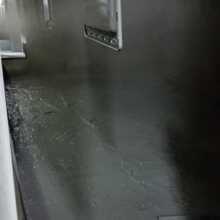How to clean up the Great Pacific Garbage Patch
The ocean is full of trash.
Whether it’s on the coast, near the coast, in the open ocean, or on the seafloor, evidence of humanity’s impact on the environment is widespread and abundant.
Each year, 160 billion pounds of trashis dumped into the oceans. And then it gets trapped.
These plastics are continuously swept up into rotating currents into what scientists call convergent or accumulation zones where they settle into gyres or “garbage patches” and wreak havoc on ecosystems in every ocean in the world -- sometimes in multiple places.
 Samples of plastics from the ocean.Credit: Citizen of the Planet/Education Images/UIG via Getty Images
Samples of plastics from the ocean.Credit: Citizen of the Planet/Education Images/UIG via Getty ImagesRecently, the non-profit organization Ocean Cleanup announced its plan to launch a mechanism designed to remove half of the plastic from the Great Pacific Garbage Patch, known as a gyre, off the coast of California in five years.
And while the effort, which launched the second week of September, could create healthier, less polluted oceans, scientists agree that the most important ocean de-pollution efforts are going to happen on land.
“Trying to clean up the oceans gyres is the most carbon heavy, expensive, and least efficient way to get rid of the issue,” ocean researcher Britta Denise Hardesty said in an interview.
Since most of the plastic in our oceans is small, and might degrade on its own through prolonged sunlight, the efforts to clean up the gyres would be costly and likely futile.
Instead, Hardesty suggested looking upstream to identify the source and minimize its impact on overall ocean pollution. Since trash moves across borders, the solution can also have no borders. Every country needs to have a plan.
Even the simple act of increasing monetary incentives for varying kinds of plastic could have major implications on the amount of plastic in the ocean.
“If plastic has value, people will pick it up,” Hardesty said, keeping it from making its way into oceans.
 The waterways in England have been polluted for decades even after the city announced efforts to make a difference.Credit: Getty Images
The waterways in England have been polluted for decades even after the city announced efforts to make a difference.Credit: Getty ImagesThis idea was roughly implemented in South Africa in 2010, when the GreenCape Waste Programme was developed to turn wastes into resources by adding value to the materials. Hardesty said that though the exact amount that this impacted the ocean is unknown, the initiative led to a significant reduction in plastic pollution.
Scientists at the National Oceanic and Atmospheric Administration's Marine Debris Program agree, prevention is the solution. Once it’s out there in the open water, it’s too hard to clean up.
“If you think about an overflowing sink, it is obvious that the first step before cleaning up the water is to turn the faucet off. That is exactly how prevention works. By acting to prevent marine debris, we can stop this problem from growing,” a representative from the Marine Debris Program said via email.
Humanity began polluting the ocean, so rather than expecting new technology to solve this problem, we'll have have stop it ourselves.
Otherwise, we don't know what will happen next, which is a really scary prospect.
Gyres that trap trash are huge and there are about two massive ones in every ocean.
The Marine Debris program counts five main gyres -- the North Atlantic Gyre, the South Atlantic Gyre, the North Pacific Gyre, the South Pacific Gyre, and the Indian Ocean Gyre.
 Tourists leave garbage on the beaches of Greece which over the years has accumulated to an overwhelming amount.Credit: Getty Images
Tourists leave garbage on the beaches of Greece which over the years has accumulated to an overwhelming amount.Credit: Getty ImagesAnd these gyres are already causing problems back on land.
Scientists have gone into grocery stores and examined items that come from the ocean -- like sea salt, oysters, fish, any kind of edible marine life -- and found bits of plastic in everything.
Also, since the trash in gyres can come from anywhere in the world, whatever organism that’s made itself at home on the surface of the trash can be introduced as a non-native species to whatever environment it’s deposited in.
These organisms, known as “hitchhikers," can create a massive issue for ecosystems if the species is invasive, a representative from the Marine Debris program said via email.
The other huge issue is widely known. Plastic kills our favorite sea creatures.
“We’ve found plastic impacting more than 700 different marine species. We see everything from turtles, dolphins, whale sharks, seals. Sometimes it kills them but sometimes we just don’t know how it impacts them,” Hardesty said.
So until we do something to stop the constant influx of trash, oceans and everyone who benefits from them will continue to suffer.
Featured Video For You
This plastic fishing company is making office furniture out of plastic waste
(责任编辑:资讯)
- ·特写|在农事定向大赛遇见和美乡村
- ·Is it safe to eat snow?
- ·The Infant's Philosopher
- ·Why Trump can dynamite a sacred, protected mountain to build the wall
- ·Ford can make your Mustang Mach
- ·22 Unusual Things You Can Find in the Desert
- ·Pyongyang may have delayed spy satellite launch due to technical issues
- ·Halep career could be over if ban appeal fails
- ·两个改造提升项目进入收尾阶段
- ·Black Friday unlocked phone deals: Apple, Google, Samsung, more
- ·Apple Watch 10 rumors: Everything we know so far
- ·Best smartphone deal: Get the Google Pixel 8 for $549 at Amazon
- ·The mainstreaming of the Republican effort to suppress the vote.
- ·This ancient fish
- ·Top 10 Tech Pranks
- ·Thiem, Raducanu headline Australian Open qualifying field
- ·Barca 'give away' points at Valencia, Atletico stumble
- ·S. Korea detects signs of N. Korea seeking to attract Chinese investment to Kaesong complex
- ·科创筑梦树立远大志向 蓄势赋能培养科技人才
- ·Taiwan election result could put S. Korea


![[Bills in Focus] Bills to promote climate action, corporate restructuring](http://res.heraldm.com/content/image/2024/01/08/20240108000379_0.jpg)











